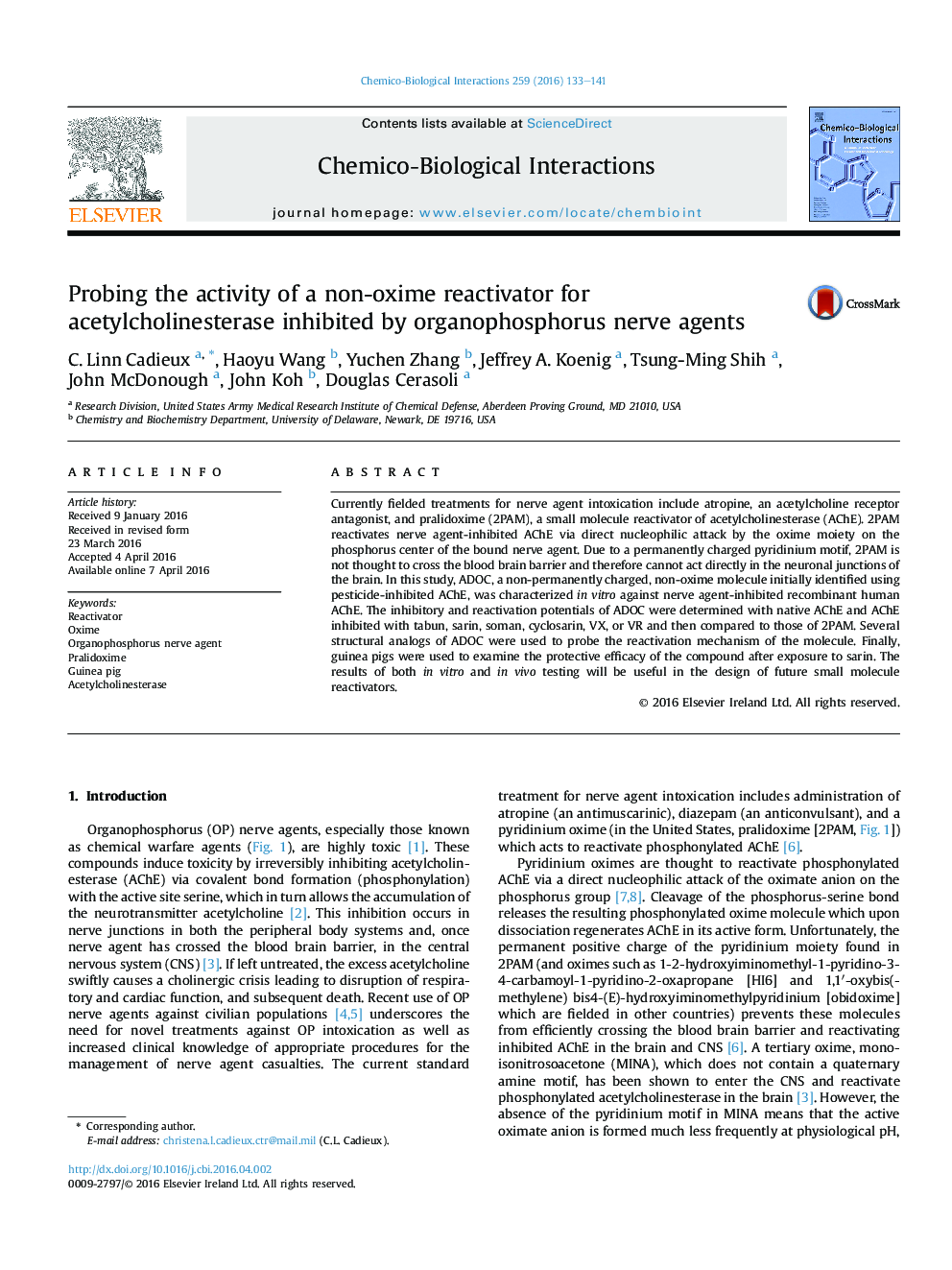| کد مقاله | کد نشریه | سال انتشار | مقاله انگلیسی | نسخه تمام متن |
|---|---|---|---|---|
| 5559514 | 1403288 | 2016 | 9 صفحه PDF | دانلود رایگان |
• Non-oxime reactivator for nerve agent-inhibited acetylcholinesterase is evaluated.
• ADOC reactivation efficiency similar to or better than 2PAM for all agents tested.
• ADOC mechanism of reactivation probed and phenol found to be essential.
• ADOC did not provide in vivo efficacy against any nerve agents in guinea pigs.
Currently fielded treatments for nerve agent intoxication include atropine, an acetylcholine receptor antagonist, and pralidoxime (2PAM), a small molecule reactivator of acetylcholinesterase (AChE). 2PAM reactivates nerve agent-inhibited AChE via direct nucleophilic attack by the oxime moiety on the phosphorus center of the bound nerve agent. Due to a permanently charged pyridinium motif, 2PAM is not thought to cross the blood brain barrier and therefore cannot act directly in the neuronal junctions of the brain. In this study, ADOC, a non-permanently charged, non-oxime molecule initially identified using pesticide-inhibited AChE, was characterized in vitro against nerve agent-inhibited recombinant human AChE. The inhibitory and reactivation potentials of ADOC were determined with native AChE and AChE inhibited with tabun, sarin, soman, cyclosarin, VX, or VR and then compared to those of 2PAM. Several structural analogs of ADOC were used to probe the reactivation mechanism of the molecule. Finally, guinea pigs were used to examine the protective efficacy of the compound after exposure to sarin. The results of both in vitro and in vivo testing will be useful in the design of future small molecule reactivators.
Journal: Chemico-Biological Interactions - Volume 259, Part B, 25 November 2016, Pages 133–141
